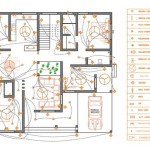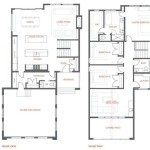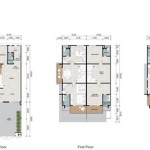Ice Fish House Plans
For the dedicated ice angler, a well-designed ice fishing house is more than just a shelter; it's a strategic asset. A comfortable and functional space maximizes time spent on the ice and enhances the overall fishing experience. Whether planning a simple, portable shelter or a more permanent structure, careful consideration of design and features is essential. This article explores the key elements of ice fish house plans, providing insights for anglers seeking to build their own ice fishing haven.
One of the first decisions when planning an ice fish house involves size and portability. Smaller, portable shelters are ideal for anglers who frequently move from spot to spot. These structures are typically lightweight and easily towed by snowmobiles or ATVs. Larger, more permanent ice houses offer greater comfort and space for amenities, but require more significant transportation and setup efforts. Anglers should carefully consider their fishing style and transportation capabilities when determining the appropriate size and portability of their ice fishing house.
Material selection is another critical aspect of ice fish house planning. Wood remains a popular choice due to its affordability, ease of construction, and insulating properties. However, wood requires regular maintenance to prevent rot and decay. Aluminum offers a lightweight and durable alternative, though it can be more expensive than wood. Composite materials combine the benefits of both wood and aluminum, providing durability and insulation with less maintenance.
Insulation plays a vital role in maintaining a comfortable temperature inside the ice fish house. Proper insulation minimizes heat loss and reduces the strain on heating systems. Common insulation materials include fiberglass, rigid foam board, and spray foam. The chosen insulation should be appropriate for the climate and the desired level of comfort.
Heating is essential for comfortable ice fishing in colder climates. Propane heaters are a popular choice, offering efficient and reliable heat. Electric heaters are another option, though they require a reliable power source. Ventilation is crucial when using any heating system to ensure adequate airflow and prevent the buildup of harmful gases. Carbon monoxide detectors should be installed in any ice fish house with a heating system.
Windows and doors are critical components of any ice fishing house. Windows provide natural light and visibility, while doors offer access and security. Double-paned windows improve insulation and minimize condensation. Doors should be well-sealed to prevent drafts and heat loss. The placement and size of windows and doors should be strategically planned to maximize functionality and views.
Interior layout and amenities significantly impact the functionality and comfort of an ice fish house. Consider the number of anglers the house will accommodate and the desired activities. Features such as built-in seating, storage compartments, and cooking areas enhance the overall experience. Pre-planning the interior layout ensures efficient use of space and optimizes functionality.
Fishing features are central to any ice fish house design. Built-in fishing holes, rod holders, and tackle storage are essential for efficient and organized fishing. Consider the placement of fishing holes to maximize access to the ice and accommodate multiple anglers. A well-designed fishing area enhances the overall fishing experience.
Electrical systems are essential for powering lights, electronics, and other appliances. Wiring should be properly installed and protected to ensure safety. Consider the power requirements of all devices and plan the electrical system accordingly. Including ample outlets and lighting fixtures enhances functionality and safety.
Plumbing and sanitation are important considerations for larger, more permanent ice fish houses. Including a sink and toilet adds convenience and comfort. Proper plumbing and waste disposal systems are essential for maintaining sanitation and hygiene. Consider the availability of water sources and waste disposal options when planning these systems.
Exterior features contribute to the functionality and aesthetics of the ice fish house. A durable exterior finish protects the structure from the elements. Consider adding features such as a porch or deck for additional space and convenience. Skids or a trailer make transportation easier. Careful planning of exterior features enhances both functionality and appearance.
Regulations and permitting requirements vary by location. Researching and obtaining the necessary permits before construction is crucial. Compliance with local regulations ensures legal operation and avoids potential penalties. Understanding local regulations is a critical step in the planning process.
Budgeting and cost estimation are essential for any construction project. Accurately estimating the cost of materials, labor, and permits helps avoid unexpected expenses. Developing a realistic budget ensures the project remains financially feasible. Careful budgeting is essential for successful project completion.
Building an ice fish house can be a rewarding experience, providing a customized space tailored to specific fishing needs. Careful planning, material selection, and attention to detail result in a functional and comfortable ice fishing haven. By considering the elements outlined above, anglers can create a structure that enhances their time on the ice and maximizes their fishing success.

Build Your Own Fish House Plans And Building Supplies

Do It Yourself Fish House Plans And Building Supplies

9 6 5 Wide Floor Plans Ideas Ice Castle Fish House

How To Build Your Own Ice Shanty Fix Com

Pin On 6 5 Wide Floor Plans

Image Result For Ice Castle Fish House Layouts Fishing

Pin On Ice Fishing

Ice S Part 1 Leah And Joe Home Diy Projects Crafts

Fish House Plans And Building Supplies The Only On Internet To Build Your Own Ice Fishing Materials Gear

Ice S Part 1 Leah And Joe Home Diy Projects Crafts








